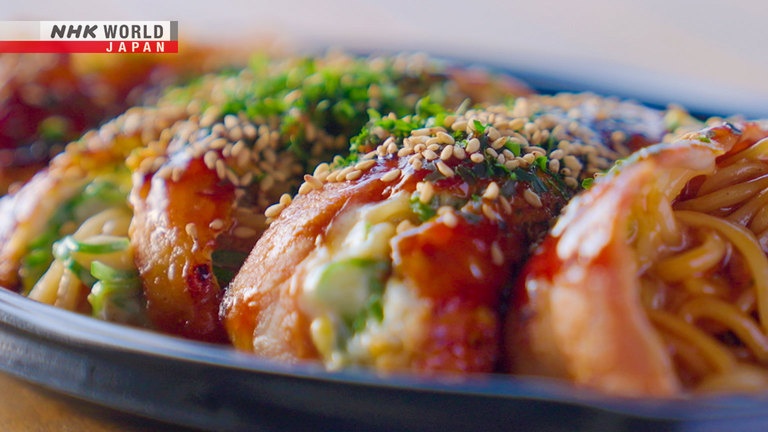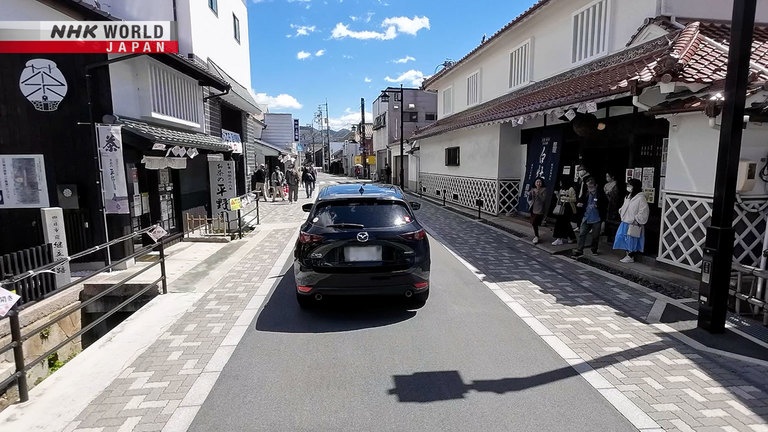HIROSHIMA
Let's see Japan by car! We'll be driving through Hiroshima Prefecture, with our goal being the famed Itsukushima Shrine. Along the way, we'll make a few stops off the beaten path that will amaze you!




Transcript
If you wish to really see Japan, get behind the wheel.
Notable places and interesting people are waiting just off the beaten path.
We start our journey in Hiroshima Prefecture, which faces the Inland Sea.
From Hiroshima Airport, we'll head west.
Following a short side trip, we'll continue on to our destination.
Itsukushima Shrine is a UNESCO World Heritage site.
This enchanting structure was built over an inlet facing the ocean.
This imposing "torii" gate attracts people from around the world.
But that's just the start of it.
We'll be stopping by more places such as this, ones few tourists rarely visit.
So, start your engine.
Hiroshima is waiting for you.
Let's hit the road.
Welcome!
As your navigation system, I'll take you to some of the many wonders Japan has to offer.
Here in Japan, we drive on the left.
As only about a third of the world's nations do. So, if it's new for you, take it easy at first.
You'll be used to it in no time.
It's about 80 kilometers from the airport to the Itsukushima Shrine ferry.
The drive takes around an hour.
Let's jump on the expressway first.
The Kochi IC interchange is 10 minutes away.
The expressway is up ahead.
The ETC gate bills you automatically.
Slow down to under 20 kilometers an hour before reaching the gate.
Then proceed slowly.
We could go straight to the destination,
however, Hiroshima offers travelers many sights to see.
How about we take a side trip while we're here?
Turn off at the Saijo IC.
I think you'll love this one.
Welcome to Saijo.
In the Edo period, this was a busy inn town that catered to travelers.
The place I wish to show you is only 10 minutes from the expressway.
Chimneys and classic buildings line the way;
there's even an entire street dedicated to sake breweries.
These seven breweries make the kind of sake Hiroshima is famous for.
You'll want to explore more on foot.
Take your time!
"Saijo is a top sake brewing area."
"You can shop for sake at the breweries."
"Water is the key to great sake."
"Saijo's water spends years percolating
down from the mountains."
The water is why there are
so many breweries in Saijo.
We've developed our own regional style.
"A sake-tasting event was held
in spring of 2023."
"You can talk to the people
who make the sake."
We've come to love sake since moving here.
Saijo makes such delicious sake.
I guess we're lucky.
I see you did some shopping.
But it's almost noon.
You must be hungry.
Experiencing the Japanese version of a rest stop is a must when driving in Japan.
There's one 12 minutes from here.
Let's check it out.
You'll find rest stops for motorists all across Japan.
They always come with a big sign, You can't miss them.
Take a break and stretch your legs!
"Japan has more than 1,200 'michinoeki.'"
"Rest stop construction began in Japan
about 30 years ago."
"Initially, they were intended as a place to
rest one's eyes and bathroom breaks."
"Today, 'michinoeki' are
destinations in themselves."
"Many offer a wide range of local products."
"They give a peek into
an area's characteristics."
"Hiroshima is Japan's top lemon growing region."
"It is also No. 1 in oyster farming."
"This shop carries more than
100 types of Hiroshima sake."
"This rest stop also features space
for children to play."
"Many people visit with their families."
"Stop by one of their many eateries
and enjoy a local meal."
"Hiroshima is renowned for its teppan cuisine."
"Thin-sliced pork topped with local eggs."
"Add to this locally-grown scallions."
"This and other meals are available
at the 'michinoeki' for around ¥1,000."
We work closely with farmers in East Hiroshima.
Our dishes are here
to showcase their products.
Would you like to enjoy one of the specialties of Hiroshima?
I'm talking about oysters!
Let's take a detour and see how they're cultivated.
I can show you where they farm the oysters.
Yasuura is a 40-minute drive from the rest stop.
We'll see some of the country along the way.
By the way, have you noticed all the red rooftops?
It's a local tradition.
The roof tiles are made from clay found in the area.
Roof tiles along the coast are usually black.
These red tiles are a signature of the Saijo Basin.
We're coming up on the Inland Sea!
You can see something floating on the water.
Those are the oyster-farming installations.
Here we are!
We're the only ones who farm like this.
"Yasuura oyster farms use piles
driven into the sea floor."
"On most farms, the oysters are
submerged at all times."
"However, Yasuura oysters are exposed to
the air when the tide goes out."
"After being submerged again,
the hungry oysters eat aggressively."
"This produces large, delicious oysters."
Our method yields delicious, plump oysters.
We give the oysters a workout.
Like people, it makes them stronger.
"Harvests run from November to April,
with oysters available at the port."
Let's make our way to the shrine!
We'll pass through Kure, one of the biggest ports on the Inland Sea.
Devastated during the war, Kure has since been rebuilt.
Today its shipbuilding and steel industries are thriving.
Kure has many museums and historic areas in which one can explore.
40 minutes from Kure port, we enter downtown Hiroshima, the biggest city in the prefecture.
Drive carefully...
You'll be sharing the road with Hiroshima's famous street cars.
Hiroshima has more streetcars than any city in Japan.
They carry nearly 40 million passengers a year.
On your right is the Hiroshima Peace Memorial Park.
The dome stands near ground zero, the area where the atomic bomb was detonated.
The park is a memorial to the more than 100,000 people who died.
40 minutes from downtown Hiroshima, we near the end of our journey.
The ferry landing is coming up.
The ferry will take you to Itsukushima Shrine.
How did you like the drive?
For three and a half hours, across 130 kilometers, we explored places most tourists miss.
Enjoy Itsukushima Shrine!
"Itsukushima Shrine is only 10 minutes by ferry."